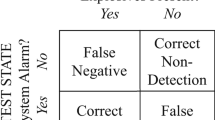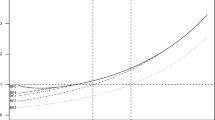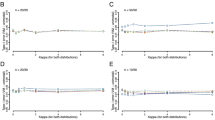Abstract
A RECENT paper by Emik1 demonstrates a method of dealing with counts of trichostrongylid eggs in the fæces of sheep. The method given is fundamentally wrong and in fact makes the paper so misleading that it seems worth outlining a more appropriate statistical treatment. The data were accumulated in a survey of the worm-egg numbers in the fæces of the lamb flock at the University of California. Trichostrongylid eggs were counted in fæces samples by a technique modified from that of Caldwell. Samples were taken once a week for twelve weeks and duplicate dilutions examined.
This is a preview of subscription content, access via your institution
Access options
Subscribe to this journal
Receive 51 print issues and online access
$199.00 per year
only $3.90 per issue
Buy this article
- Purchase on Springer Link
- Instant access to full article PDF
Prices may be subject to local taxes which are calculated during checkout
Similar content being viewed by others
References
Emik, L. O., J. Animal Sci., 8, 73–80 (1949).
McQuillan, M. T., Trikojus, V. M., Campbell, A. D., and Turner, A. W., Brit. J. Exp. Path., 29, 93 (1948).
Swanson, R. G., and Knodt, C. B., J. Dairy Sci., 32, 257 (1949).
Anscombe, F. J., J. Roy. Stat. Soc., 111, 181 (1948).
Cochran, W. G., J. Roy. Stat. Soc., Supp., 6, 104 (1939).
Author information
Authors and Affiliations
Rights and permissions
About this article
Cite this article
LEECH, F. Statistical Analysis of Results for Successive Tests on the Same Organism. Nature 165, 323–324 (1950). https://doi.org/10.1038/165323b0
Issue Date:
DOI: https://doi.org/10.1038/165323b0
This article is cited by
Comments
By submitting a comment you agree to abide by our Terms and Community Guidelines. If you find something abusive or that does not comply with our terms or guidelines please flag it as inappropriate.



